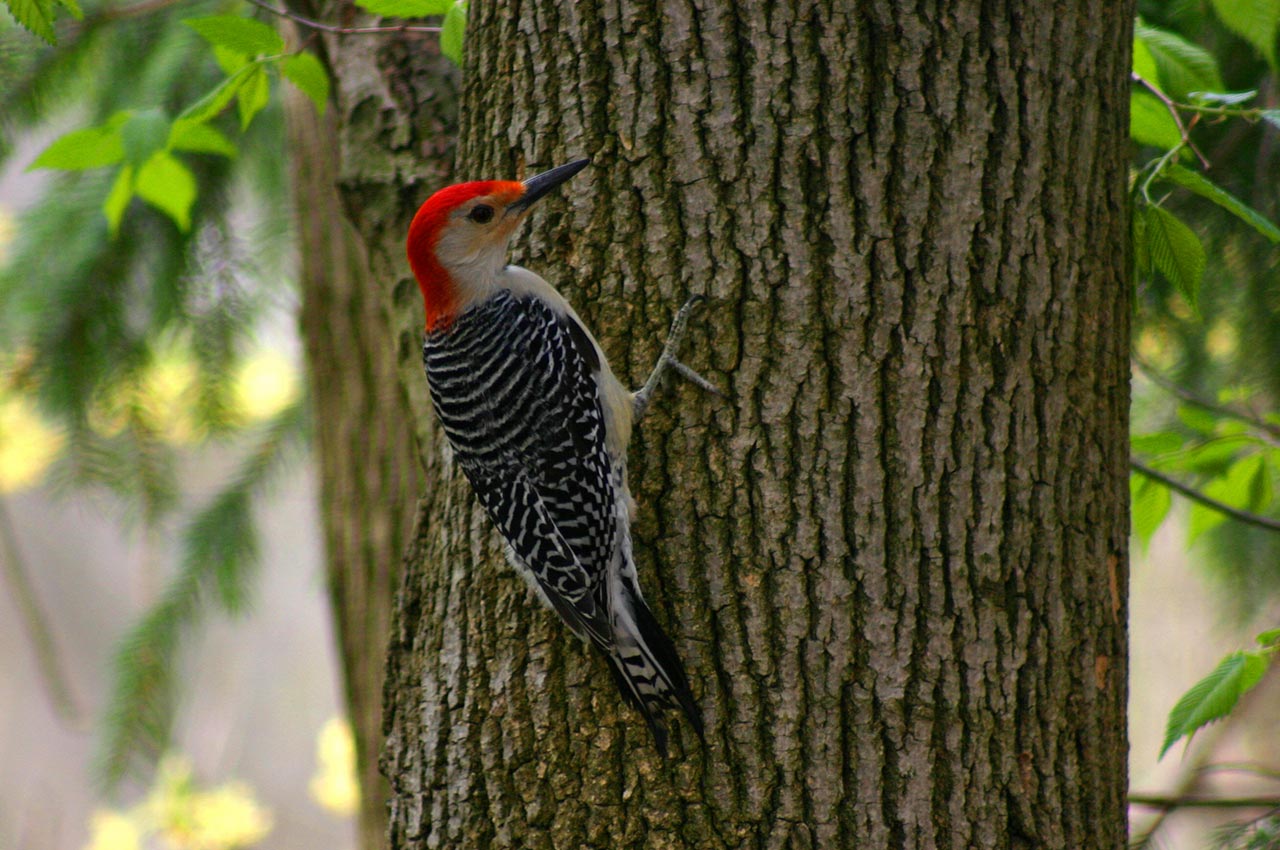Observing Woodpeckers in Florida: Variety Diversity and Distribution
Observing Woodpeckers in Florida: Variety Diversity and Distribution
Blog Article
Discover the Remarkable World of Woodpeckers: Everything You Need to Know
The world of woodpeckers is a world filled up with distinct actions, intricate adjustments, and a varied array of species. From their habitats and distribution patterns to their feeding habits and specialized anatomical attributes, woodpeckers have actually long astounded the rate of interest of ornithologists and nature lovers alike.
Woodpecker Habitats and Circulation
In North America, for example, woodpeckers can be found in both coniferous and deciduous forests, utilizing their solid beaks to forage for insects and develop nesting dental caries in trees. In Africa, certain woodpecker species have adjusted to arid settings, such as the acacia forests, where they play a crucial function in controlling insect populations.

Feeding Behaviors and Diet Regimen
Woodpeckers utilize their solid beaks to drill right into the bark of trees, penetrating for insects and larvae concealed below the surface. In enhancement to pests, woodpeckers also take in nuts, seeds, fruits, and sap.
Woodpeckers are understood for their drumming behavior, which serves not just to interact with other woodpeckers but likewise to locate food. The rapid drumming audio is developed by the bird pecking on powerful surface areas like dead trees or steel poles. This habits can draw in insects hidden in the wood, enabling the woodpecker to detect their visibility and prey on them.
One-of-a-kind Adjustments for Tree Climbing
In their skilled pursuit of pests concealed within tree bark, woodpeckers have actually evolved remarkable physiological features that furnish them with one-of-a-kind adjustments for reliable tree climbing. One of the essential adjustments is their zygodactyl feet, with 2 toes pointing ahead and two pointing backwards, offering a solid hold on tree trunks. This specialized foot arrangement allows woodpeckers to hold on to upright surfaces easily, allowing them to move up and down trees with agility. you could look here Additionally, woodpeckers have rigid tail plumes that function as a supportive prop while they climb, assisting in balance and stability. Their solid, chisel-like beaks are not just utilized for boring into timber however also for gripping onto bark as they rise tree trunks. Moreover, woodpeckers have strong neck muscular tissues and a distinct head structure that absorb the impact of continuous pecking, enabling them to climb up up and down without creating harm to their minds. These adaptations showcase the amazing transformative layout that enables woodpeckers to browse trees with accuracy and effectiveness.
Diverse Woodpecker Species Worldwide
With over 200 various types spread across numerous environments worldwide, the family members of Picidae encompasses an exceptional variety of woodpeckers. These birds can be located in woodlands, timberlands, savannas, and even urban locations, showcasing their versatility to various settings. From the famous Northern Flicker in The United States And Canada to the colorful and elusive Crimson-backed Flameback in Asia, each woodpecker varieties displays distinct attributes in regards to tuft, behavior, and habitat choice.
Woodpeckers vary considerably in dimension, with the petite Downy Woodpecker determining around 6-7 inches in size, while the effective Lineated Woodpecker can get to up to 17 inches - Woodpeckers in Florida. Their beaks additionally come in different shapes and dimensions, reflecting their feeding habits. Some species concentrate on drawing out insects from tree bark, like the Acorn Woodpecker, while others, such as the Black-cheeked Woodpecker, prey on fruits and seeds

Preservation Efforts and Obstacles
Preservation efforts for woodpecker populaces are essential in alleviating the impact of environment loss and various other risks encountering these varied bird varieties. Woodpeckers face numerous difficulties to their survival, largely due to deforestation, urbanization, climate adjustment, and intrusive types. To deal with these problems, preservation initiatives concentrate on protecting and recovering woodpecker this hyperlink environments, carrying out lasting forestry methods, and elevating awareness concerning the significance of these birds in ecosystems.
One considerable obstacle in woodpecker preservation is the fragmentation of their habitats, bring about isolated populaces that are much i was reading this more at risk to extinction - Woodpeckers in Florida. Guardians work to produce wild animals corridors and shielded areas that attach these fragmented environments, permitting woodpeckers to relocate between different areas for feeding, reproducing, and shelter

Verdict
Finally, woodpeckers are fascinating birds with distinct adjustments for tree climbing and feeding habits. They can be discovered in varied environments worldwide, encountering preservation challenges as a result of environment loss and human activities. Understanding their environments, diet regimens, and habits is crucial for preservation initiatives to safeguard these vital bird types. Further study and conservation activities are needed to make sure the survival of woodpeckers in the wild.
Report this page